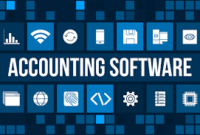Supercharge Your Success with Irresistible Customer Loyalty Programs
Customer loyalty programs are essential tools for businesses looking to foster long-term customer engagement and loyalty. These programs offer various benefits, including increased customer retention, enhanced brand loyalty, and positive word-of-mouth marketing. In this comprehensive guide, we will walk you through the process of designing, implementing, and optimizing effective customer loyalty programs that will drive your business towards success.
Types of Customer Loyalty Programs
There are several types of customer loyalty programs that businesses can consider implementing:
1. Points-based programs
Points-based programs reward customers with points for every purchase they make. These points can be redeemed for discounts, free products, or exclusive perks.
2. Tiered loyalty programs
Tiered programs offer different levels of rewards based on customer loyalty. As customers move up the tiers by reaching certain milestones, they unlock more valuable benefits and exclusive offers.
3. Discount or cashback programs
Discount or cashback programs provide customers with immediate discounts or cashback rewards on their purchases, encouraging repeat business.
4. Membership or subscription programs
Membership or subscription programs offer exclusive benefits and perks to customers who sign up for a paid membership or subscription service.
5. Experiential or exclusive access programs
Experiential or exclusive access programs provide customers with unique experiences, such as early access to new products, VIP events, or personalized services.
Designing Effective Customer Loyalty Programs
When designing your customer loyalty program, it’s crucial to follow these key steps:
A. Identifying program objectives and target audience
Clearly define the objectives you want to achieve with your loyalty program and identify your target audience to tailor the program to their needs and preferences.
B. Determining program structure and rewards
Decide on the structure of your program, such as the earning and redemption rules, and choose rewards that are appealing and valuable to your customers.
C. Setting achievable milestones and redemption options
Set realistic milestones for customers to achieve and provide them with a variety of options to redeem their rewards, ensuring flexibility and accessibility.
D. Balancing simplicity and attractiveness
Make sure your loyalty program is easy to understand and participate in, while also offering attractive rewards that motivate customers to engage and stay loyal to your brand.
Benefits of Customer Loyalty Programs
Implementing customer loyalty programs can have a range of benefits for your business:
A. Increased customer retention and repeat purchases
Loyalty programs encourage customers to keep coming back to your business, leading to higher customer retention rates and increased frequency of purchases.
B. Enhanced customer engagement and brand loyalty
By offering rewards and exclusive experiences, loyalty programs create a sense of engagement and foster a strong emotional connection between customers and your brand.
C. Positive impact on customer lifetime value
Loyal customers tend to spend more over their lifetime, resulting in increased customer lifetime value and higher revenue for your business.
D. Word-of-mouth marketing and referrals
Satisfied and loyal customers are more likely to recommend your business to their friends and family, leading to valuable word-of-mouth marketing and new customer acquisition.
Implementing Customer Loyalty Programs
To successfully implement your loyalty program, consider the following steps:
A. Selecting appropriate program technology and platforms
Choose the right technology and platforms to support your loyalty program, ensuring seamless tracking of customer activities, rewards, and redemptions.
B. Communicating program details and benefits to customers
Effectively communicate the details and benefits of your loyalty program to your customers through various channels, such as email newsletters, social media, and in-store signage.
C. Training employees to effectively promote and manage the program
Train your employees to educate customers about the program, answer their questions, and provide assistance in redeeming rewards or addressing any issues.
D. Ensuring seamless program integration with existing systems
Integrate your loyalty program with your existing systems, such as point-of-sale systems or customer relationship management software, to streamline operations and provide a seamless experience for both customers and staff.
Measuring and Evaluating Program Success
Tracking and evaluating the success of your loyalty program is crucial for continuous improvement. Consider these steps:
A. Tracking and analyzing program performance metrics
Monitor key performance indicators like customer participation rates, redemption rates, and revenue generated from loyal customers to measure the effectiveness of your program.
B. Assessing customer participation and engagement levels
Analyze the level of customer participation and engagement with your loyalty program through customer surveys, feedback, and data on their interactions with the program.
C. Utilizing customer feedback and satisfaction surveys
Gather customer feedback through surveys to understand their satisfaction levels, preferences, and suggestions for improving the program.
D. Making data-driven adjustments and improvements
Use the insights gained from program evaluation to make data-driven adjustments and improvements to your loyalty program, ensuring it remains relevant and effective.
Best Practices for Customer Loyalty Programs
Follow these best practices to optimize the success of your customer loyalty program:
A. Offering meaningful and attainable rewards
Ensure that the rewards you offer align with your customers’ preferences and are easily attainable, creating a sense of excitement and satisfaction.
B. Providing personalized and relevant experiences
Personalize the experiences you offer through your loyalty program based on customer data, preferences, and behavior to make customers feel valued and appreciated.
C. Encouraging ongoing customer engagement and interaction
Promote ongoing engagement by regularly communicating with your customers, providing them with exclusive updates, offers, and opportunities to earn additional rewards.
D. Regularly reviewing and refreshing program offerings
Continuously review and refresh your loyalty program to keep it exciting and relevant, introducing new rewards, features, or tiers to keep customers engaged and coming back for more.
Case Studies of Successful Customer Loyalty Programs
Real-life examples of successful customer loyalty programs can offer valuable insights. Here are two notable case studies:
A. XYZ Retail’s PointsPlus Program
XYZ Retail’s PointsPlus program rewards customers with points for every purchase, which can be redeemed for discounts, free merchandise, and special event invitations. The program has seen a 20% increase in customer retention and a 15% boost in average order value.
B. ABC Airlines’ Elite Club
ABC Airlines’ Elite Club is a tiered loyalty program that offers exclusive benefits to frequent flyers. Members earn points for each flight and can enjoy priority boarding, free upgrades, and access to luxurious airport lounges. The program has resulted in a 25% increase in customer loyalty and a significant rise in customer referrals.
Conclusion
Customer loyalty programs play a vital role in building lasting relationships with customers and driving business success. By implementing an effective loyalty program tailored to your target audience, you can increase customer retention, foster brand loyalty, and create positive word-of-mouth marketing. Remember to regularly measure, evaluate, and optimize your program based on customer feedback and data insights. So, don’t hesitate to invest in customer loyalty programs and unlock the power of long-term customer engagement and success.



